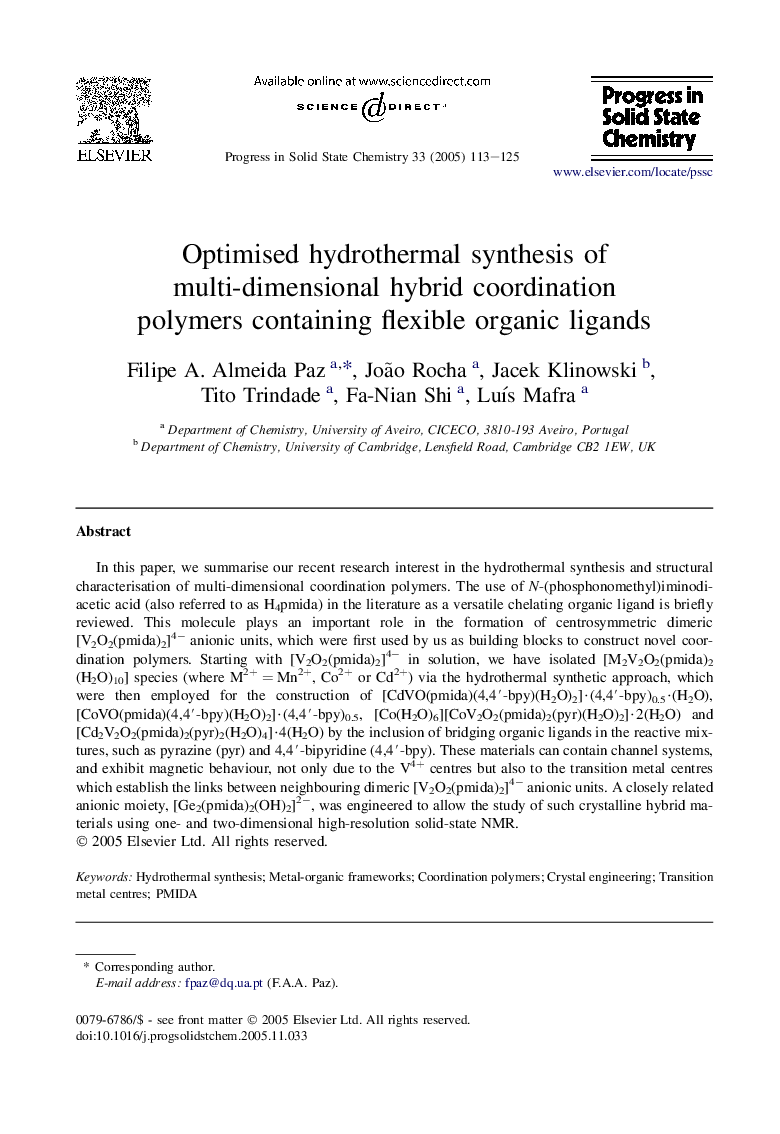| Article ID | Journal | Published Year | Pages | File Type |
|---|---|---|---|---|
| 9781258 | Progress in Solid State Chemistry | 2005 | 13 Pages |
Abstract
In this paper, we summarise our recent research interest in the hydrothermal synthesis and structural characterisation of multi-dimensional coordination polymers. The use of N-(phosphonomethyl)iminodiacetic acid (also referred to as H4pmida) in the literature as a versatile chelating organic ligand is briefly reviewed. This molecule plays an important role in the formation of centrosymmetric dimeric [V2O2(pmida)2]4â anionic units, which were first used by us as building blocks to construct novel coordination polymers. Starting with [V2O2(pmida)2]4â in solution, we have isolated [M2V2O2(pmida)2(H2O)10] species (where M2+ = Mn2+, Co2+ or Cd2+) via the hydrothermal synthetic approach, which were then employed for the construction of [CdVO(pmida)(4,4â²-bpy)(H2O)2]·(4,4â²-bpy)0.5·(H2O), [CoVO(pmida)(4,4â²-bpy)(H2O)2]·(4,4â²-bpy)0.5, [Co(H2O)6][CoV2O2(pmida)2(pyr)(H2O)2]·2(H2O) and [Cd2V2O2(pmida)2(pyr)2(H2O)4]·4(H2O) by the inclusion of bridging organic ligands in the reactive mixtures, such as pyrazine (pyr) and 4,4â²-bipyridine (4,4â²-bpy). These materials can contain channel systems, and exhibit magnetic behaviour, not only due to the V4+ centres but also to the transition metal centres which establish the links between neighbouring dimeric [V2O2(pmida)2]4â anionic units. A closely related anionic moiety, [Ge2(pmida)2(OH)2]2â, was engineered to allow the study of such crystalline hybrid materials using one- and two-dimensional high-resolution solid-state NMR.
Keywords
Related Topics
Physical Sciences and Engineering
Materials Science
Ceramics and Composites
Authors
Filipe A. Almeida Paz, João Rocha, Jacek Klinowski, Tito Trindade, Fa-Nian Shi, LuÃs Mafra,
